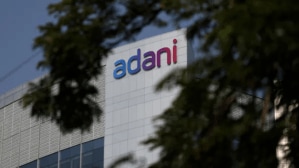Old ships, workers, all break down
RAJKOT, March 6: Mahendra Singh Soni, a 24-year-old worker from Bihar, came to Plot No 141 at Alang shipyard at 8.30 am on March 5. At the e...

RAJKOT, March 6: Mahendra Singh Soni, a 24-year-old worker from Bihar, came to Plot No 141 at Alang shipyard at 8.30 am on March 5. At the end of a hard day’s work at the ship-breaking plot, he would get Rs 65. Soni worked almost the entire day but didn’t live to collect his wages.
He was one of the two persons killed in a fire at Plot No 141 on Thursday. And they become the latest entry in the list of accidents at the Alang ship-breaking yard. Nearly 100 people died last year 16 of them in a tanker explosion. This year began with a fire on a Russian vessel that killed two.
The list grows longer but the Gujarat Maritime Board (GMB), the nodal agency for maintaining the yard, does not keep a tab because the workers come from outside, the labour is contracted out. Alang Port Officer Captain Vivek Pandey says the labourers are not the GMB’s responsibility as it does not employ them. “So there is no question of owning up for their welfare,” he says.
So, who is responsible? The GMB and the Gujarat ShipBreakers Association pass the buck to each other. The result is a death trap. Alang looks like a massive abattoir where ships are ripped apart, cylinders keep leaking, steel slabs fall without warning. Where 30,000 workers struggle from 8.30 am to 6 pm for Rs 65 a day.
“You are lucky if you come out alive, even if battered and bruised, at the end of the day,” says Bishwanath, a migrant worker from Orissa. At Alang where most of the breaking plots are, there is a fire station and an officer on duty, but no telephone. At the nearby Sosyo yard, there’s nothing.
There’s no doctor at the only hospital around and if the injury is serious the workers are taken to Bhavnagar, 50 km away.
“The GMB has no laws or acts for the safety measures of the yard. However, we have an informal MoU with the ship breakers in which we have detailed the safety procedures to be followed by ship breakers and workers,” says K Kailashnathan, vice-chairman and CEO of the GMB.
But that doesn’t say much. If the “safetymeasures” include obtaining clearance from the department of explosives for the ship breakers, for the workers they are limited to wearing helmets and goggles. “It is very difficult toimplement them. When it is hot the workers don’t wear helmets and it is difficult to make them understand the need to wear goggles while cutting," says Kailashnathan.
The yard’s annual turnover is Rs 650 crore and the GMB has collected Rs 150 crore in the past five years as premium from the ship breakers. The GMB has spent Rs 20 crore on Alang — on roads and infrastructure that has benefited just the ship breakers. The worker is left nowhere.
The labourers — mostly from Orissa, Bihar and Uttar Pradesh — live in makeshift camps built of wood but spend most of their days at the yard where each ship takes around six weeks to break. For this period, they are more or less bonded labourers with the spectre of death looming large.
The Gujarat High Court had appointed a commission headed by Justice Dewan to assess thesituation and suggest measures for the welfare of the workers.This led to the birth of the Alang Workers’ Welfare Trust, headed by Dewan himself.
As for the funds, the Gujarat Ship Breakers Association president Vishnu Gupta says his organisation deposited Rs 65 lakh with the GMB which was supposed to pool in as much. The GMB says it will do so as soon as an action plan is drawn up. Dewan says he is waiting for the GMB to acquire land to start construction of the housing colony for the labourers. "Our primary concern is to build the housing colony and set up hospitals," he says.
But that’s far away. The land is yet to be bought and at the moment, the plan exists on yellowing paper. The GMB says it is launching a campaign for ensuring the safety of workers. "Compared to the last several years, the accident rate has dropped. We don’t expect drastic changes in just one year; it will take some time," says Kailashnathan.
Meanwhile, the labourers journey every day from the crammed wooden sheds to themerciless yard and back — not sure whether they will return alive.






- 01
- 02
- 03
- 04
- 05

























